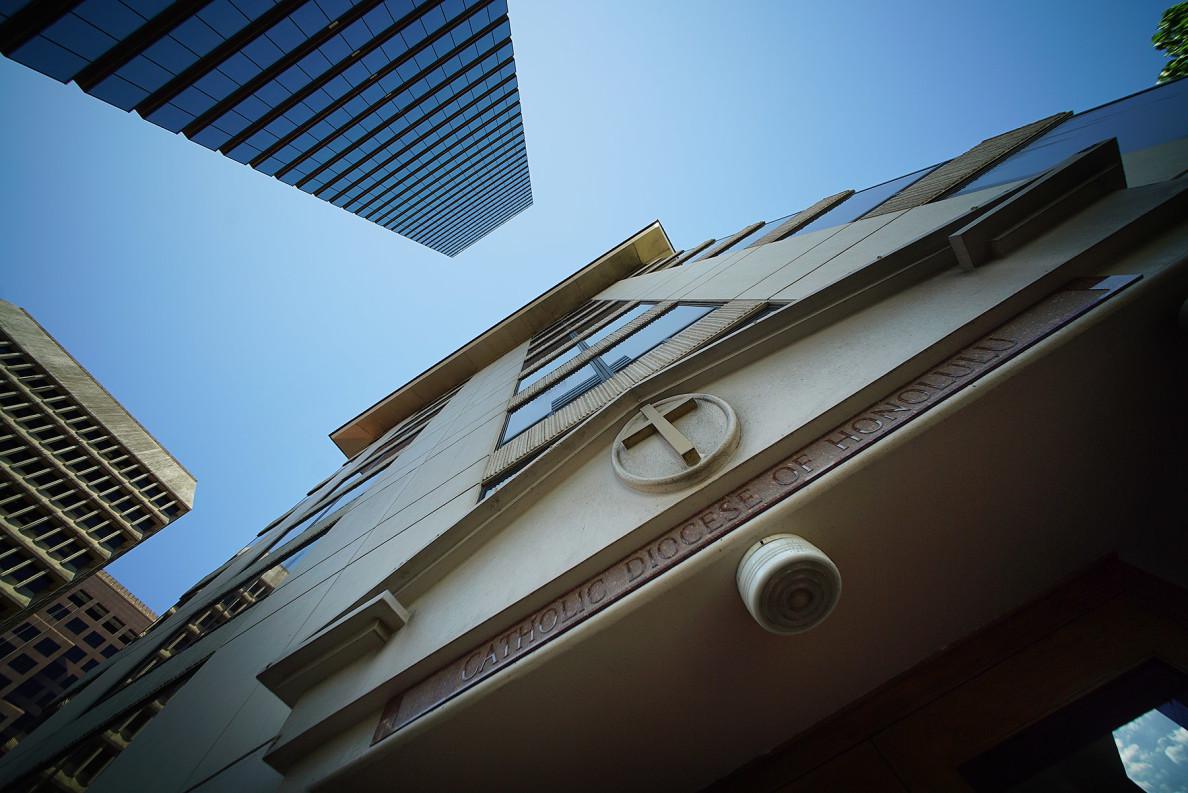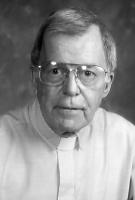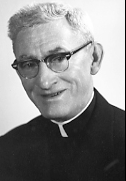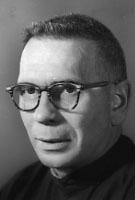|
Denby Fawcett: How Many Sexual Abuse Victims Still Suffer In Silence?
By Denby Fawcett
Editor’s Note: Civil Beat generally does not use anonymous sources, as noted in our long-standing policy. We’re making an exception here because of the importance of hearing a sexual abuse victim’s perspective, and the fact that court records, including a settlement with the Catholic Church, do not reveal his identity. “I consider myself one of the lucky ones,” says a man who recently settled a sex abuse case against the Catholic Church. MG, as he’s referred to in court records that keep his identify secret, says he feels “lucky” because after decades of battling alcoholism, drug addiction, mood disorders and depression, he’s at the point where he can begin to forgive three Catholic priests he says sexually assaulted him when he was too young to stop them. “To me, it is like they killed the kid in me. There is a part of me that was a kid and he died,” says MG. On Jan. 21, the Diocese of Honolulu, the Associated Sulpicians of the United States and the Maryknoll Fathers and Brothers reached a mediated settlement with MG for an undisclosed amount. He is one of 63 people who have sued Hawaii’s Catholic Church and the religious orders overseeing parishes and schools, where they allege they were sexually attacked when they were children. Most of the victims have filed legal complaints using only their initials or as John or Jane Does to maintain their privacy. All of the victims were able to sue after the Hawaii Legislature extended the statute of limitations for civil complaints in 2012 and again in 2014 to the current April 24 deadline. Vicar General Gary Secor, of the Diocese of Honolulu, says in an emailed statement that the diocese “is currently in mediations and is hopeful these will be completed within the next few weeks.” Yet attorneys for two legal teams which have filed the majority of the lawsuits in Hawaii estimate that as the deadline approaches there are hundreds of other survivors of sex abuse still too troubled to seek redress. Honolulu attorney Randall Rosenberg says, “Some of them have likely passed away, taking their shame and embarrassment to the grave. Some are still out there, too scared to call. We had a woman call today. She’s in her late 70s and was abused at the age of 12 by the caretaker at her Catholic school. She has not told her husband or her children to date and is deathly afraid they will find out.” Rosenberg’s co-counsel in the child sex abuse suits, Leander James, says Hawaii’s unique, dynamic culture with its emphasis on shame and family pride may have dissuaded many victims from seeking help. James is an Idaho attorney who has reached settlements in more than 300 child sex abuse cases on the mainland. He calls Hawaii unique because of “its layers upon layers of cultural constraints that vary from ethnicity to ethnicity and even from island to island. For some survivors there is a fear that coming forward will bring shame not just to the survivor but to his entire family as well.” James believes it is particularly difficult for Asian men to publicly acknowledge they were sexually abused by priests and most difficult for Filipino Catholic men.” Kailua attorney Mark Gallagher says open acknowledgement of being sexually abused can be stressful because of what he calls “island culture,” the small town atmosphere where everybody knows every body’s business. Both Rosenberg’s and Gallagher’s firms have recently purchased newspaper ads featuring photos of Catholic clergy accused of sex abuse to alert alleged victims that the deadline to sue is about to expire. The Catholic Diocese here has reached mediated settlements with 47 of the plaintiffs. Secor declines to reveal much the church has paid in settlements so far, but attorneys involved in the cases estimate the cost to settle all the litigation might exceed $20 million. “It is important to shift the cost from the victim to the institution that caused the harm,” says Marci Hamilton, a constitutional law scholar at Yeshiva University and a nationally recognized attorney for child sex-abuse survivors. The Hawaii lawsuits involve 26 priests, brothers and other church personnel at 18 island schools and churches. Most of the alleged sex abuse took place from the early 1950s through the late 1980s. The thrust of the lawsuits is that the Catholic Church failed to protect children from sexual assaults by priests it knew or should have known were pedophiles. And when children reported that they had been sexually molested, the church allegedly failed to help them. Instead of informing parents of the danger and reporting credible allegations of criminal sexual abuse to the police, the lawsuits say the church shielded the priests, enabling them to harm more children. Some of Hawaii’s accused pedophile priests have continued to be honored by their religious orders up until very recently. Only in 2013, after a group of sex abuse survivors protested, did Maryknoll School stop offering an endowed scholarship in the name of James Jackson, a priest accused of child sex abuse by five people. In October, St. Anthony Padua Church in Kailua finally removed a plaque naming its parish hall for the late Father Joseph Henry. Father Henry was accused of child sex abuse by 18 people. Attorney Rosenberg says the removal of plaque bearing Father Henry’s name was a negotiated condition of settlement on behalf of his clients who accused the now-deceased priest of harming them. The church has settled complaints against Henry and other priests accused of sexual assault and other crimes. MG, who is now 61, says in court documents that when he was a 12-year-old altar boy at Good Shepherd Church in Honomu on Hawaii Island, a priest named Francis Daubert raped him. Daubert was a Maryknoll father filling in temporarily for the regular pastor at the remote rural church. In a telephone interview, MG told me Daubert asked him to remain in the church after Mass to help him find his way around since he had just arrived in Honomu. While they were in a back room with no other parishioners present, MG says Daubert suggested playing a game with ropes in which they would tie each other up to see how fast they could get loose but MG says the game turned out to be a ruse to entrap him. He says after Father Daubert bound him so tightly that he couldn’t escape, he was sexually tortured and sodomized for six hours before Daubert passed out and he was able to get away. The lawsuit says, “The priest was intoxicated on alcohol and proceeded to bind M.G.. After binding him, the priest sodomized, assaulted, bruised and battered him.” MG said Daubert repeatedly told him not to tell anyone, but he says his parents found out almost immediately after Daubert called them at home that same night to ask if the boy could come back to the church to spend the night with him. MG’s mother became suspicious when she saw the scared look on his face. He says only later that night was he able to tell his mother what had happened after she saw the bruises on his body “in the places normally covered by my shorts.” MG says his mother called St. Joseph Church in Hilo to report what had happened and to ask that a priest be sent to their home immediately. At first the church refused, but MG’s mother said she would call the police if a priest did not come. When the priest arrived from Hilo, he asked MG to stay outside in the garden while he talked to his parents inside. MG says when the priest came back outside, he asked him, “’are you okay?’ I said yes and he said ‘Good.’ That was the extent of the church’s concern.” Daubert was transferred from Good Shepherd, but he continued to serve in other parishes on the mainland until he died in 1983. A few years later, MG alleged in his lawsuit, he was sexually abused by Father Anthony Pascale and Father William Queenan when he was a student at St. Stephen’s Diocesan Seminary in Kaneohe. Another seminarian at St. Stephen’s also accused Queenan of molesting him when he was 14 years old. MG says the sex abuse stopped after he transferred from St. Stephen’s to Hilo High School. But he says the pain lingers to this day and has manifested itself over the years in drinking and cocaine binges, a failed marriage and weird behavior like purchasing 21 guns and rifles. “I wanted to make sure no one was able to put control over me again without my consent,” he says. Attorney Rosenberg says the suffering from child sex abuse goes on and on. “These people are horribly damaged. They will never get to live their lives they way they were supposed to.” In an emailed statement, Vicar General Secor says the Catholic Church and the Diocese of Honolulu have been working for more than two decades to establish a series of safeguards to protect 14,000 children in Hawaii attending Catholic schools, religious education programs and youth ministries. Secor says following the principles established by the U.S. Conference of Catholic Bishops in 1992 the diocese responds quickly to all credible allegations of sex abuse, and when there is evidence that abuse has occurred the alleged offender is promptly relieved of duties and referred for medical evaluation and intervention. In addition, the church follows the law in reporting incidents to the police and cooperates with any investigation as well as reaching out to victims and their families, Secor says. The Diocese has published a manual that’s distributed to all clergy, teachers and volunteers working with minors and details how to recognize and report child sex abuse and institute screenings to prevent abuse. All children involved in Hawaii’s Catholic schools and religious education programs in Hawaii now are given age-appropriate training on preventing abuse and what to do if it happens. The church has also set up a victim hotline and offered free counseling and assistance. The many reforms the Catholic Diocese of Hawaii has instituted come too late for troubled survivors like MG. And they probably will do nothing to reassure the victims of abuse still out there, unable because of fear or humiliation to come forward to seek help. They are the unlucky ones. “They have kept it a deep dark secret and that has taken a toll on them,” says Gallagher. Here is the list of plaintiffs and the names of the priests they accuse of abusing them. It was included in a petition by attorneys for the Catholic Church in Hawaii asking the court for the right to mediate. Click on the double arrows in the bottom bar to enlarge the chart.
|
.
Any original material on these pages is copyright © BishopAccountability.org 2004. Reproduce freely with attribution.



